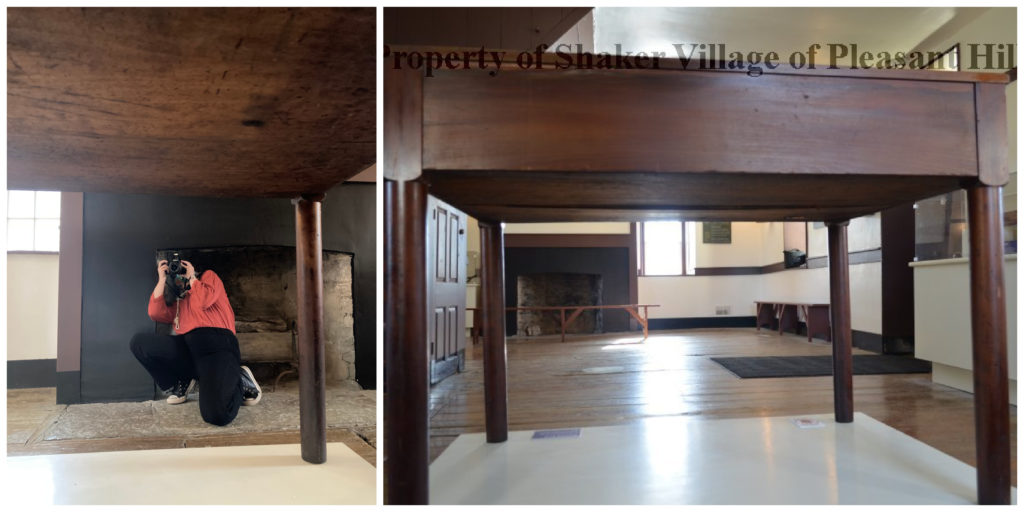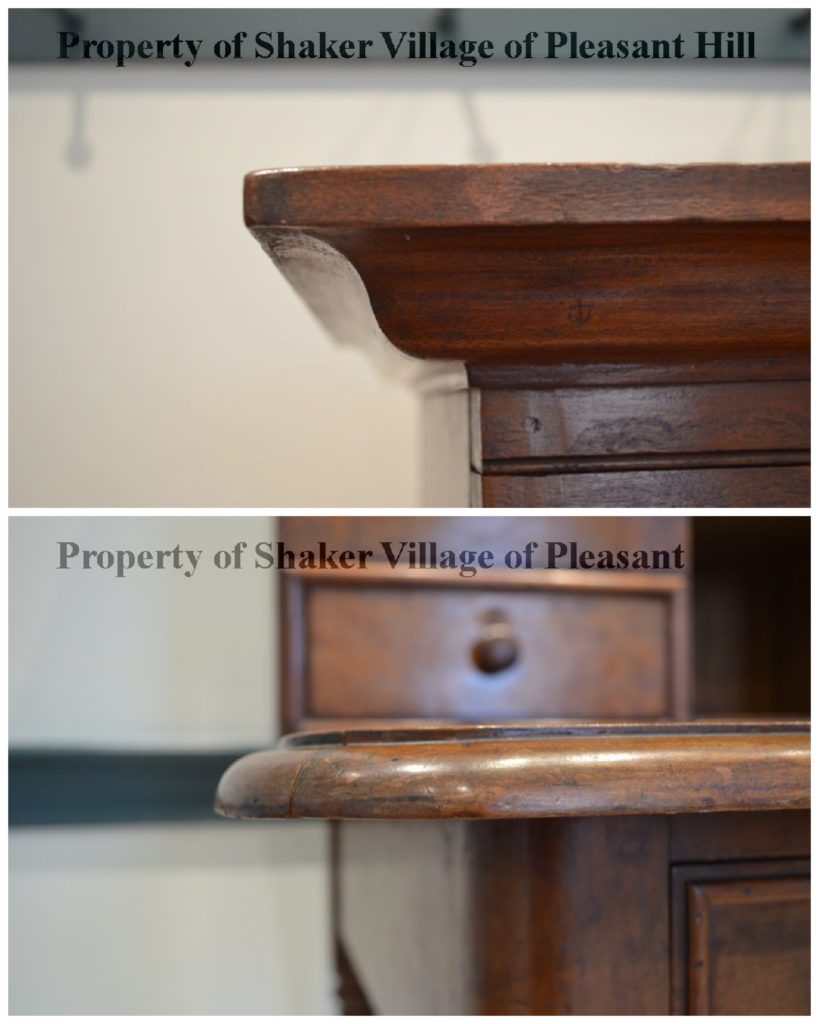Laura Webb, Program Specialist
Happy New Year, y’all! Did you miss me? The NEH grant series took a hiatus last month as the Village@Work blog had a full schedule of holiday-themed posts – but now we’re back, bay-beeee! So, what have I been up to in the meantime?
As some of you may recall, November and December were primarily spent taking photographs of our larger exhibited objects in situ (that is, in their current positions, without moving anything around). My photographs attempted to capture as many planes of an item as possible – front, back, sides, top, and bottom – as well as:
- Hardware;
- Condition details;
- Construction details;
- Use details and mechanics;
- Markings and inscriptions; and
- Locations of physical accession numbers.
Sounds straightforward, right? Well…sometimes, not so much. Photographing objects in situ means that many of their planes are either inaccessible or nearly so. To capture as many sides as possible, I often had to position myself in creative ways. My favorite example of this is below, in which I found myself crouching in a hearth like some sort of fireplace goblin in order to get the entire back side of a large desk in frame.

To get detailed shots, I got up close and personal with many objects I have seen on a regular basis since they’ve been put on display. If you’ve ever participated in one of our Objects + Stories programs, you’ll know how much the practice of “close looking” can reveal about an artifact, and that was certainly true even now. I discovered many aspects of objects I had never noticed before! In addition, taking the time to appreciate the quintessential Shaker craftsmanship that went into making these pieces was a sheer pleasure.

In my last post, I discussed the importance of taking current and good-quality photographs of collections items. But why do I take so many photographs? My goal is to recreate the experience of looking at an item in-person as well as I can. This means getting detailed images! When you are able to browse these images in our database, hopefully you will be able to understand how an item was made and assembled, as well as how it was used and how it worked.
What can you learn from the photographs above? What do you notice? And what’s the weirdest thing you’ve ever done to get a good photo? Let us know, and be sure to check back in a few weeks for my series finale!
Shaker Village of Pleasant Hill was awarded a CARES grant through The National Endowment for the Humanities in June 2020. Funding from this grant award supported two activities to enhance digital humanities initiatives at SVPH, including Laura Webb’s work to review our collection records and prepare them for publishing in a public digital database.